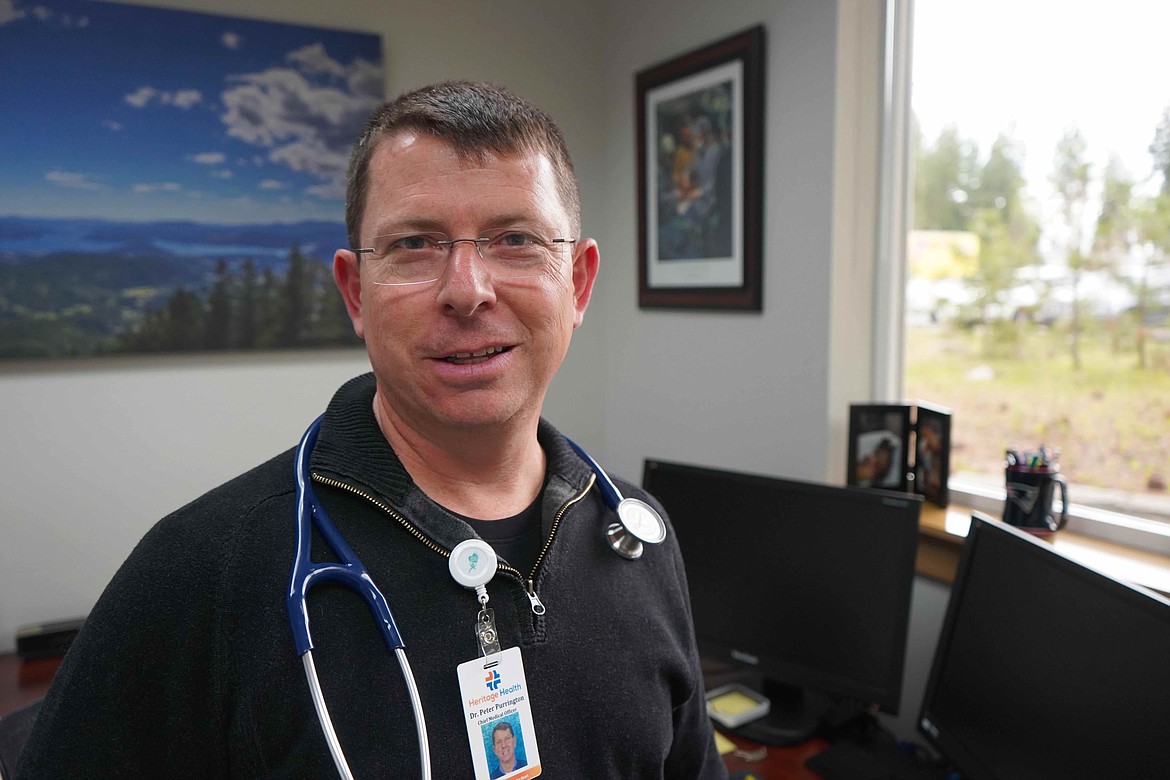Vaccine demand takes a breather
The calamity of Feb. 1, when Idaho opened up COVID-19 vaccination efforts to include seniors 65 and older, has quietly begun to subside.
“It’s about what we expect in North Idaho,” said Dr. Peter Purrington of Heritage Health from the Kroc Center in Coeur d’Alene, where he was wrapping up Wednesday’s vaccination efforts in conjunction with the Salvation Army rec center-turned-vaccination site. “We’ve essentially seen about a 30% early adoption rate, where 30% of the vaccine-eligible population has either received the dose or signed up for it.”
Purrington, who described the two-week-old joint endeavor between the local health provider and the Kroc as a “fantastic partnership,” has been part of the clinic’s boots-on-the-ground team since vaccinations opened up in December. He said the fierce demand that followed Feb. 1’s Phase 2 rush has cooled significantly.
“Demand is manageable right now,” Purrington said. “The work flow we’re seeing to get appointments filled are at a normal pace. We’re not seeing long lines outside of health organizations. Right now, supply has outpaced demand.”
That shift in the supply-versus-demand economics of the COVID-19 vaccine has led Idaho’s Department of Health and Welfare to open vaccinations up even further.
After accelerating its timeline by more than a week to allow vaccine administrations into the arms of grocery and convenience store workers on March 4, the state has now extended the age range of the most senior Idahoans, now authorizing doses to those 55 and older.
That ebb and flow of demand is a circadian rhythm Kootenai Health has taken note of, as well.
“There seems to be a higher demand as we open up appointments for each tier group,” said Andrea Nagel, communications coordinator for the community hospital. “Then a gradual decrease in interest once most people from that group get the vaccine who wish to do so. However, our weekly appointments are still filling up and we are still receiving positive feedback about people’s experience.”
Those weekly appointments through Kootenai Health have been given a one-week reprieve, as the hospital will spend next week’s appointment times administering second doses for those who received the Pfizer and Moderna vaccines.
A third vaccine, produced by Johnson & Johnson, has been released, with a wave of new doses to hit the area’s shelves in the weeks to come.
“We have been receiving steady shipments each week and have a good supply on hand,” Nagel said.
That steady supply chain will help the community when demand inches back up, Purrington predicted.
“It’s similar to what you see when new or disruptive technologies or products come out," he said. "It’s this new thing, and everyone wants it. After demand starts to slow, word-of-mouth gets around — in this case, with family and friends telling people the vaccine is safe, and they’re happy they were able to get it. Because of that, we’re still expecting additional demand.”
Another driver that's been evening out demand has been the Department of Health and Welfare’s newly unveiled covidvaccine.idaho.gov tool, essentially an online waiting list where Idahoans can pre-register for their dose; when it’s their turn, a local provider will reach out to that resident and schedule an appointment.
That tool has duplicated some providers’ efforts, however, as the economic principle that forced the state to implement the pre-registration tool — unyielding demand — has faded.
But providers who once considered the state’s pre-registration tool as much-needed digital breathing room to ease the initial calamity of demand is now being used as a new weapon in the battle to vaccinate Idahoans: eliminating wasted doses. If providers predict they’ll open too many vials — which have a shelf life of around six hours, depending on the manufacturer — they can use the state’s pre-registration tool as a last-ditch effort to find eligible residents and call them in, rather than let doses expire.
Panhandle Health public information officer Katherine Hoyer emphasized that with the accelerated timelines, it’s important people remain up-to-date on who is currently eligible for a vaccine.
Aside from the front line health care workers, long-term care residents and staff, hospital staff, pharmacy and dental industry employees, first responders, educators and school staff, and adults 65 and older — all groups that were already on the list — the new guidelines allow vaccinations for:
• adults 55 and older
• homeless shelter residents
• food and agriculture processing workers
• members of the National Guard
• public transit workers
• U.S. Postal Service workers
• flight crews
• gas, water, electric, telecommunications and other utility workers
• those in the manufacturing industry
As of Wednesday, Panhandle Health is receiving about 6,400 doses per week, many of which get distributed to enrolled health providers like Heritage Health and Kootenai Health. Hoyer said while many are eager for their turn, the order of who gets vaccinated remains secondary to the more basic goal: To get doses into arms.
“We want to ensure that everyone who is eligible is offered the vaccine,” she said.
“Everyone” will eventually include all adults. When that day comes, Purrington said he doesn’t know what to expect.
“That’s when we’re going to see where demand is really at,” he said. “When that 25-to-55 age group is eligible. That will be interesting.”



